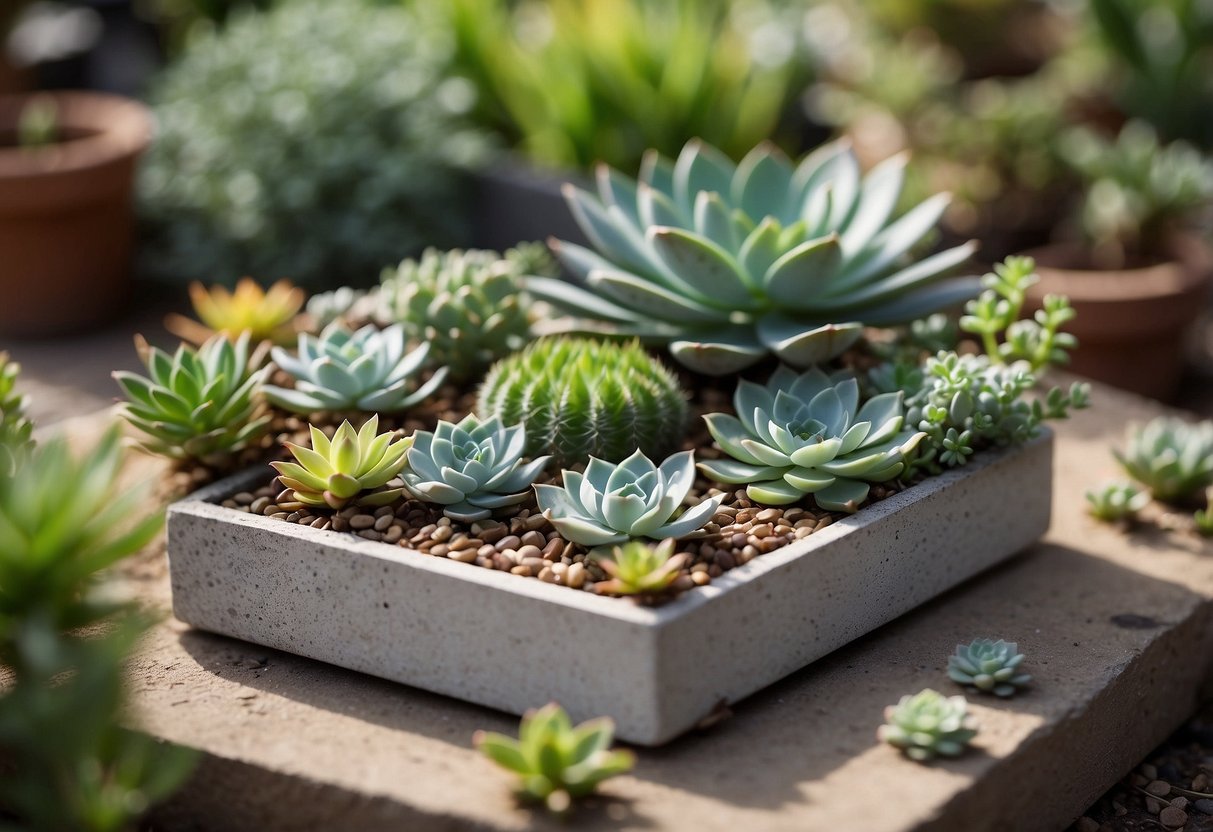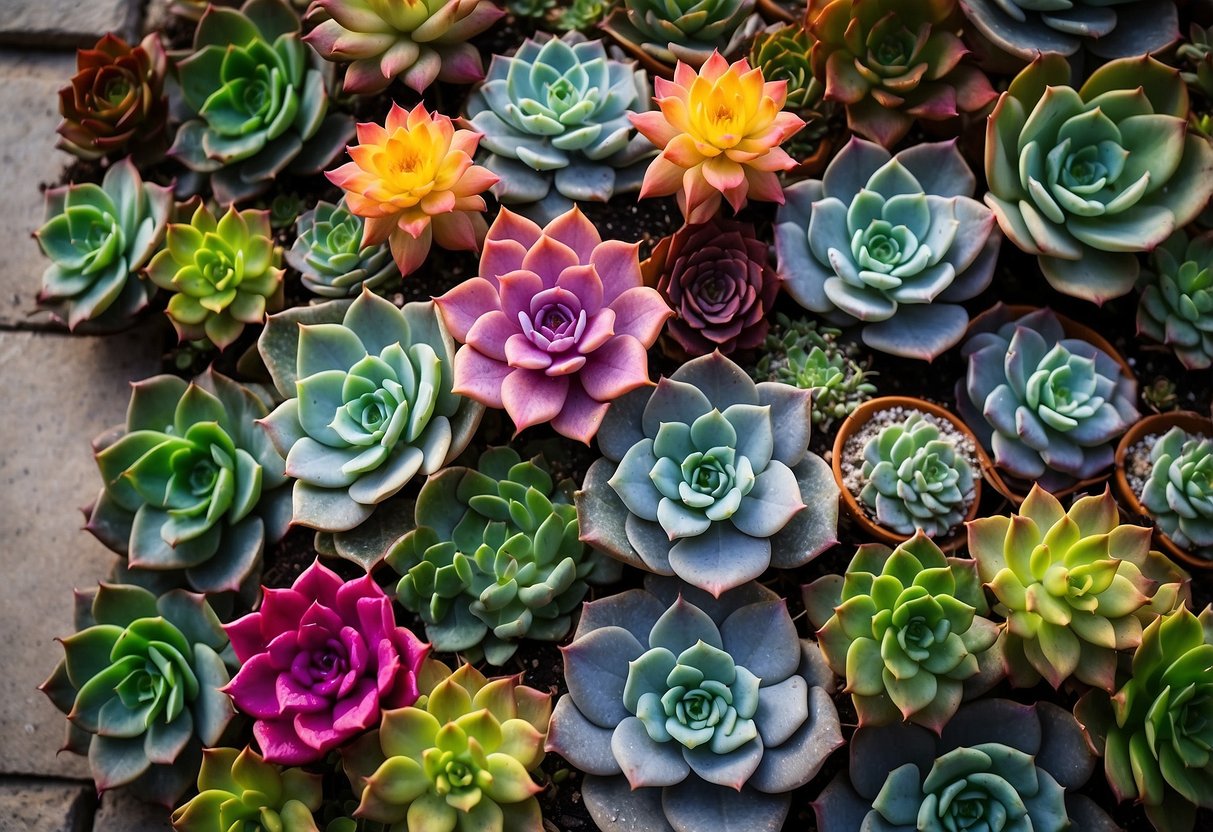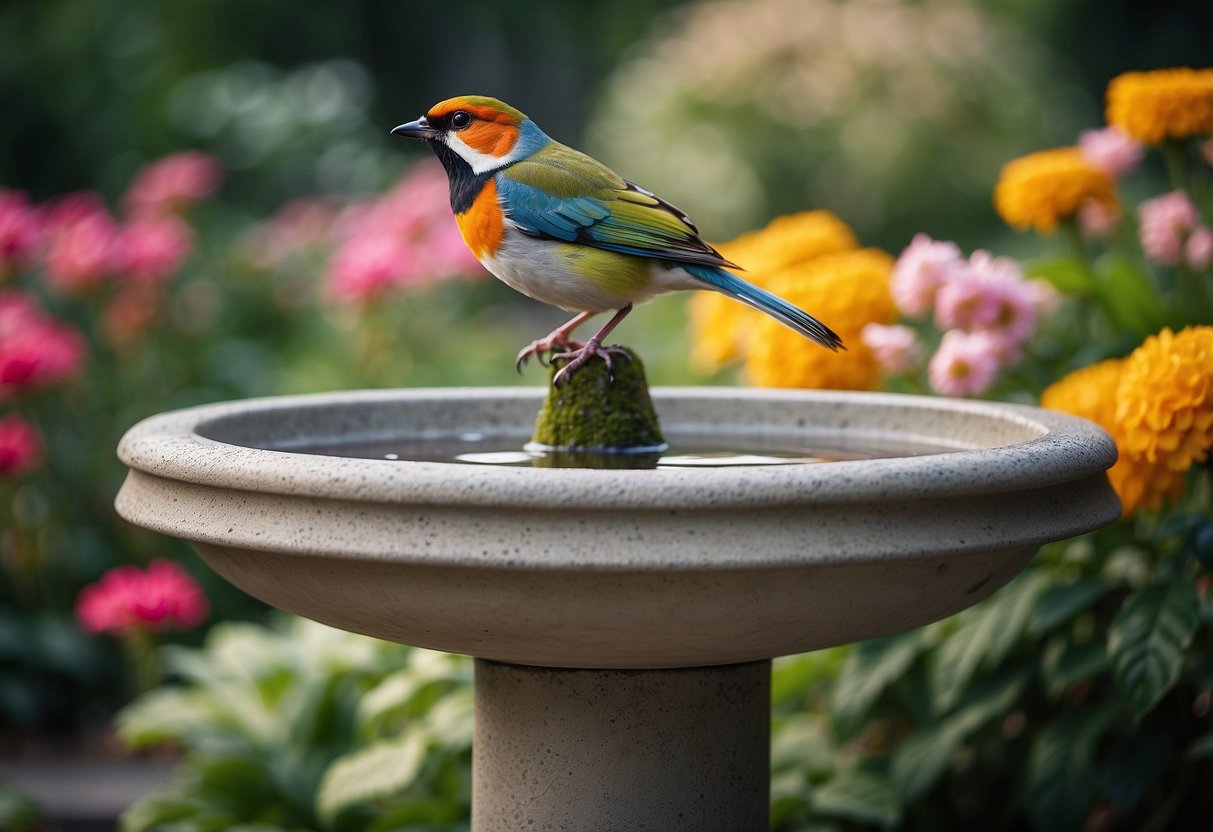Cement Block Garden Ideas: Creative Tips for Your Backyard
Creating a garden with cement blocks can be a fun and rewarding project. They offer a durable, affordable, and versatile solution for a variety of gardening needs. Whether you are planting vegetables, flowers, or succulents, these sturdy blocks can serve multiple purposes.

How do you turn plain cement blocks into a thriving garden oasis? This article will introduce you to various creative ideas. From raised beds to unique garden features, you’ll discover simple and practical designs that bring life to your outdoor space.
1) Vertical Herb Garden

Creating a vertical herb garden with cement blocks is a great way to save space.
Arrange the blocks in a sturdy, stacked design against a wall or fence.
You can plant different herbs in each block.
Try using cinder blocks for a simple yet effective setup.
This garden can add a touch of greenery to any small space.
2) Colorful Succulent Wall

You can create a colorful succulent wall using cement blocks.
This type of wall not only saves space but also adds a pop of color to your garden.
Start by arranging the blocks in a pattern you like. Fill each block with soil and plant your favorite succulents.
Water the plants sparingly and enjoy the beauty of your new, vibrant wall. For more inspiration, check out ingenious DIY cinder block garden ideas.
3) DIY Block Planters

Creating your own block planters is both fun and affordable. You can design stylish planters with just a few cinder blocks.
First, decide where you want your planters. Then, stack the cinder blocks in your desired shape.
You can leave the blocks plain or paint them to match your garden’s aesthetic. Add soil and plants to complete your project.
For more ideas, check out these DIY cinder block planter ideas.
4) Raised Vegetable Bed

Using cement blocks for raised vegetable beds is a practical and durable option. These beds resist rot, making them a long-lasting choice for your garden.
You can arrange the blocks in a rectangular or square shape. Fill the center with soil and compost to create a healthy environment for your vegetables.
Another advantage is the ability to add extra height for improved drainage. This can help your plants grow healthier and stronger.
For more ideas, check out How To Build A Raised Cinder Block Garden Bed.
5) Cement Block Privacy Screen

A cement block privacy screen is a great way to add some seclusion to your garden.
You can stack the blocks vertically and fill them with soil to plant flowers or herbs. This helps make the wall look more natural.
Using cement blocks for privacy screens is also strong and durable in any weather. It’s perfect for creating a peaceful retreat in your backyard. For more ideas, check out this DIY cinder block planter wall.
6) Outdoor Bench with Planter

You can create a simple and cozy outdoor bench using cinder blocks and wood planks.
To add a unique touch, use the holes in the cinder blocks to plant your favorite flowers or small herbs.
This will not only give you extra seating but also bring more greenery to your garden.
7) Bird Bath Stand

A bird bath stand made from cement blocks is a fantastic addition to your garden. It’s simple to build and adds height and charm to your outdoor space.
Stack a few cement blocks to create a sturdy base. You can paint them or leave them natural, depending on your garden’s look.
Top the stand with a shallow basin or bowl to hold water. This DIY cement bird bath attracts birds and creates a focal point in your garden.
8) Painted Flower Holders

You can brighten up your garden with painted cinder block flower holders.
Use bright, cheery colors to make the flower holders stand out.
You can paint patterns or even simple designs on the blocks for a creative touch.
The painted blocks can easily be stacked to form various shapes and sizes.
This project combines art and gardening, making your garden both functional and beautiful.
9) Stacked Planter Tower

Using cinder blocks, you can create a stacked planter tower that saves space and looks great. Stack the blocks in a sturdy, balanced way, ensuring each block has an open top to hold soil and plants.
These towers can be ideal for growing flowers or succulents. With proper arrangement, you can build height and visual interest effortlessly.
Place your planter tower in a sunny spot for best results. This idea not only maximizes your garden space but also adds a unique vertical element. For more inspiration, consider checking out some DIY cinder block garden designs.
10) Cinder Block Fire Pit

Creating a cinder block fire pit is an easy and affordable way to enhance your backyard. You can use blocks that typically cost around a few dollars each, making it budget-friendly.
Start by arranging the blocks in a circular or square shape. Stack them securely, and you have a functional fire pit ready for gatherings.
Using cinder blocks makes the process fast and straightforward. Plus, they are durable and can withstand heat, ensuring your fire pit lasts. Enjoy cozy evenings with family and friends around your DIY creation.
Cement Block Garden Basics

Creating a garden with cement blocks is both cost-effective and versatile. These blocks are sturdy, durable, and can be arranged in numerous ways to fit your gardening needs.
Why Use Cement Blocks?
Cement blocks are a fantastic option for gardening due to their strength and durability. They can withstand harsh weather and provide a solid structure for your plants. Additionally, cement blocks are easy to work with, allowing you to build raised beds, planters, or even decorative garden walls.
Another key benefit is cost-efficiency. Cement blocks are inexpensive and widely available. You can often find them at local hardware stores or even reuse old ones from construction projects. Their modular design means you can easily stack and arrange them in various configurations.
Using cement blocks can also help with soil drainage. The gaps in the blocks can be filled with gravel or other materials to promote drainage, preventing water from pooling and harming plant roots.
Types of Cement Blocks for Gardening
You have several options when choosing cement blocks for your garden. The most common type is the basic cinder block, which is hollow and rectangular. These blocks are great for building raised beds and walls due to their size and shape.
Solid concrete blocks are another option. These blocks are heavier and offer more stability, making them ideal for structures that need extra support. They are also less porous than cinder blocks, which can help retain moisture better.
There are also decorative blocks designed specifically for landscaping. These blocks come in various shapes and textures, adding an aesthetic appeal to your garden. They can be used as edging for flower beds or to create intricate patterns in larger garden projects.
By choosing the right type of cement block, you can customize your garden to match your vision and meet the needs of your plants.
Design Ideas for Cement Block Gardens

Cement blocks can be used in creative ways to enhance your garden. They are versatile materials that can be arranged to create raised garden beds and vertical gardens, adding both function and beauty to your outdoor space.
Raised Garden Beds
Raised garden beds made with cement blocks are durable and easy to build. You can arrange the blocks in a rectangle or square, stacking them to the desired height. Fill the bed with nutrient-rich soil and start planting.
Benefits:
- Improves drainage: Raised beds help prevent water logging.
- Eases back strain: Elevating the garden makes it easier to tend to plants.
- Keeps pests at bay: Raised height deters some pests.
You can also paint the blocks to match your garden’s color scheme or add decorative elements. Another idea is to plant herbs or flowers in the holes of the cement blocks, maximizing your planting space.
Vertical Gardens
For small spaces, a vertical garden can be a great solution. By stacking cement blocks in a staggered formation, you create pockets for planting. This design is perfect for herbs, succulents, or small flowering plants.
Advantages:
- Saves space: Great for patios or small balconies.
- Adds visual interest: Vertical setups can serve as a focal point.
- Easy to maintain: Watering and harvesting are more accessible.
Mount the blocks against a wall for added stability or build a free-standing garden. Consider using different block sizes to create varied depths and textures. Adding a vertical garden to your space can transform a bland wall into a lush oasis quickly and easily.
Incorporate some decorative touches like lanterns or small sculptures to personalize it further. These gardens not only improve aesthetics but also provide fresh produce and flowers right at your doorstep.







